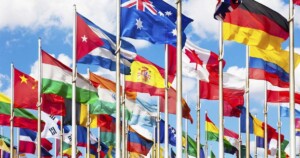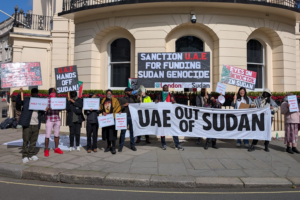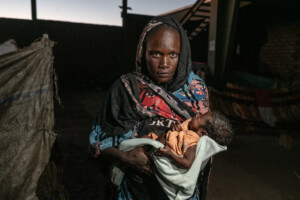Sudan OCHA bulletin 28: New site for South Sudanese refugees in East Darfur
As of 10 July 2016, over 80,000 South Sudanese refugees are estimated to have arrived in Sudan since the beginning of the year, mainly in East and South Darfur, White Nile, and West Kordofan states, the UN Office for the Coordination of Humanitarian Affairs (OCHA) in Sudan reports in its latest weekly bulletin.
As of 10 July 2016, over 80,000 South Sudanese refugees are estimated to have arrived in Sudan since the beginning of the year, mainly in East and South Darfur, White Nile, and West Kordofan states, the UN Office for the Coordination of Humanitarian Affairs (OCHA) in Sudan reports in its latest weekly bulletin.
More than 30,000 of these refugees are seeking refuge in the Khor Omer camp for the displaced near the East Darfur capital Ed Daein. The governmental Humanitarian Aid Commission (HAC) has identified a suitable new site in El Kariyo, in Bahr El Arab locality, about 30 kilometres south of Ed Daein.
Emergency shelter items will be distributed once the relocations are complete. In June, most of the refugees in Khor Omer received essential non-food items, and the remaining refugees will receive materials in July. The health sector is working on improving vaccination coverage and scaling up campaigns through door-to-door messaging in Khor Omer.
The International Organisation for Migration (IOM) continues the tracking and verification of the new arrivals in Khor Omer, where 28,595 refugees have been registered and verified out of the 30,638 tracked reported cases.
Access to assess needs and provide assistance to South Sudanese refugees outside Ed Daein remains challenging owing to administrative restrictions, and capacity to respond across East Darfur remains constrained because of insufficient staff, especially in places where staff are addressing newly emerging crises such as the arrival of refugees in Abu Sinaidira.
El Ferdous
According to an inter-agency initial rapid assessment carried out in Abu Sinaidira village, El Ferdous locality, on 3 July, about 6,000 people have arrived from Raja, South Sudan. Between 3,000 and 4,000 more refugees who were reportedly stranded, being too tired and weak to travel further or lacking transportation to continue, are anticipated to arrive soon, though there are concerns that the impending onset of rains may cut off access to people in need in El Ferdous locality.
Gaps in food, nutrition, health, water, sanitation, hygiene and household items are the priority needs identified. The East Darfur Ministry of Health delivered medication for the establishment of an Outpatient Therapeutic Programme to provide nutrition support within the existing health facility. Unicef distributed a one-week supply of Plumpy’Nut and BP-5 Compact Food to children who were severely and moderately malnourished on 4 July. The World Food Programme (WFP) plans to distribute 103.5 metric tons (MT) of food assistance to the 6,000 South Sudanese refugees on 16 July, and the UN Refugee Agency (UNHCR) will distribute essential household items.
Response needed for 17,000 people in Tur
Following attacks by militiamen on Tur village and the Tur East site for new displaced in Central Darfur on 20-21 June, 17,000 people have returned to their original locations, and are reportedly in need of humanitarian assistance. According to the preliminary reports of a Unamid team which visited Tur on 23-24 June, the priority needs are food, water, sanitation, shelter, and health care.
Although the WFP completed a food distribution to 12,000 displaced affected by the violence, no independent verification exercise has been carried out as yet to determine the exact number of people in need. Unamid has expressed the urgent need for an inter-agency humanitarian assessment in Tur.
Support for displaced families in West Darfur
An emergency response targeting newly displaced families in the Um Tajok area in Kereinik locality, West Darfur, was carried out by the Sudanese Red Crescent Society (SRCS) on 30 June, with support from the Qatari Red Crescent Society.
Of the estimated 550 families who were displaced following fighting between pastoralists and nomadic herders in Um Tajok on 22 June, 100 families were provided with basic food items, and the families are being supported by the host community. The SRCS also provided drugs and medical supplies to the health clinic in Um Tajok. As yet, a needs assessment has not been carried out. A committee of national NGOs formed by the Humanitarian Aid Commission (HAC) is planning to carry out an assessment mission, and support the humanitarian response.
Flooding expected
Although the 2015/16 El Nino has dissipated, the Famine Early Warning Systems Network (FEWS Net) has identified a 55-70 per cent chance of the La Niña climatic phenomenon occurring in Sudan by the end of 2016, with increased risk of flooding across Sudan.
According to the Sudan Meteorological Authority (SMA), there is an 80 percent change of above average to average rainfall over the 2016 rainy season (June to September/October). FEWS Net has anticipated average to above average 2016-2017 crop production and good pasture conditions, with positive impacts to food security for poor rural families through improved household food production, access to seasonal wild foods, purchasing power and availability of livestock products.
Flooding in Sudan normally occurs from June to October, and according to the World Food Programme (WFP) and Food and Agriculture Organization (FAO) El Niño Seasonal Calendar, flooding in parts of East Africa including Sudan may occur from July to November this year.
Flash floods and heavy rains in June have already damaged and destroyed over 2,500 houses in Sennar State, reportedly affecting almost 15,000 people so far, and the Civil Defence and the Sudanese Red Crescent Society have provided an initial response to affected people. Flooding has also been reported in parts of Blue Nile, White Nile and Gedaref states. According to HAC, State Emergency Committees have been activated in Blue Nile, El Gezira, North Kordofan, River Nile, Sennar and White Nile states.











 and then
and then